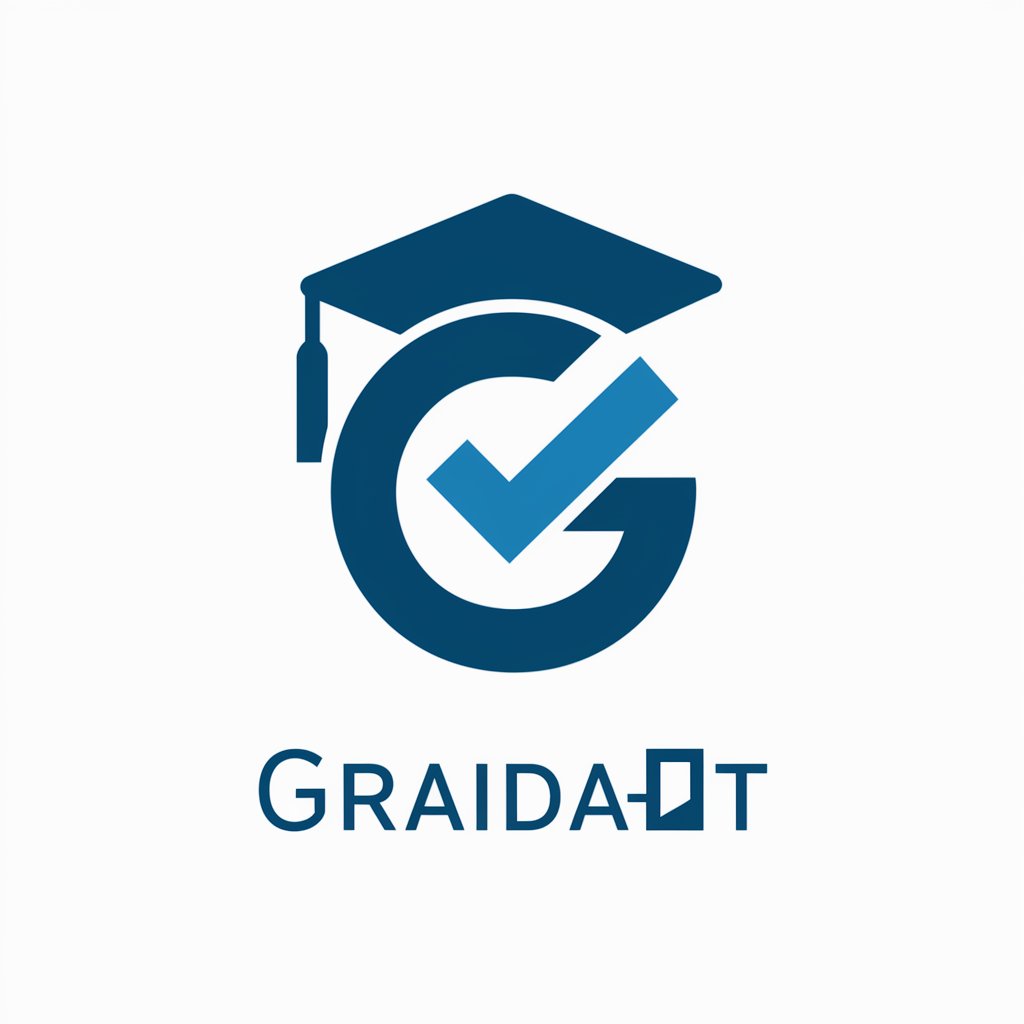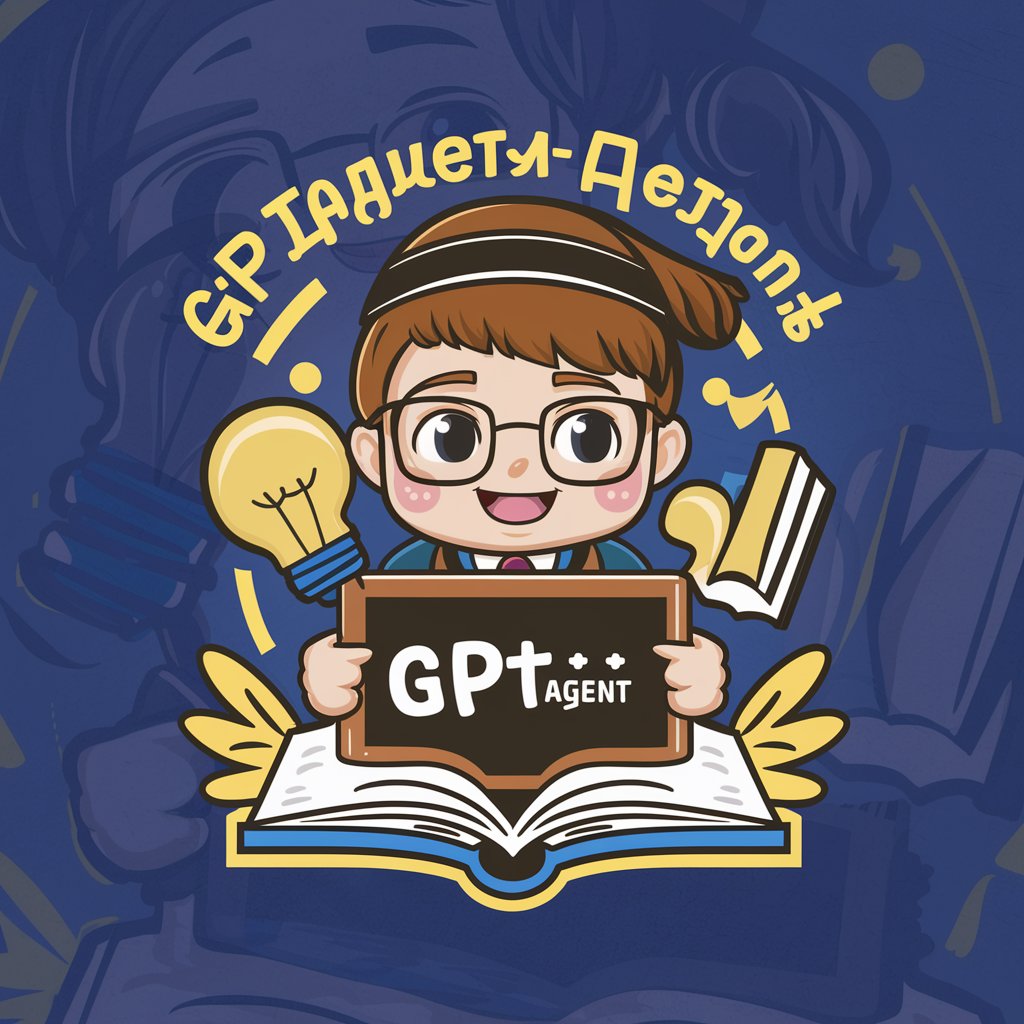Graidit - AI-Powered Grading Assistant

Welcome to Graidit, your AI assistant for efficient and fair grading.
Streamlining grading with AI precision.
Evaluate the accuracy of the student's response based on the provided rubric.
Provide constructive feedback highlighting strengths and areas for improvement.
Analyze the student's solution and generate scores for each rubric item.
Compare the student's answer with the reference solution to ensure consistency in grading.
Get Embed Code
Overview of Graidit
Graidit is designed as an AI-powered grading assistant aimed at enhancing the efficiency, accuracy, and fairness of grading academic exams and assignments. It utilizes advanced AI algorithms to analyze student responses against a detailed grading rubric, providing scores for each rubric item along with reasoning. This system is built to handle a wide range of subjects and question types, from objective multiple-choice questions to subjective essay responses. An example scenario includes grading an essay where Graidit assesses the student's argument clarity, use of evidence, and writing quality against the rubric, offering precise scores and constructive feedback. Powered by ChatGPT-4o。

Core Functions of Graidit
Rubric-Based Grading
Example
For a math problem, Graidit evaluates the student's solution against criteria such as correct methodology, final answer accuracy, and the clarity of explanation.
Scenario
In a calculus exam, a student's answer is analyzed to ensure the correct application of differentiation techniques and the accuracy of the result, with points awarded for each aspect per the rubric.
Constructive Feedback Generation
Example
After grading a history essay, Graidit provides detailed feedback on areas of strength, such as effective argumentation, and areas for improvement, such as the need for more diverse sources.
Scenario
A student submits an essay on World War II. Graidit highlights the well-supported arguments and suggests incorporating more primary sources to enhance credibility.
Bias Mitigation
Example
Graidit identifies and flags potential biases in grading, especially in subjective assessments, prompting a review to ensure fairness.
Scenario
While grading an English literature assignment, Graidit flags a subjective evaluation of thematic interpretation, suggesting a review to confirm the assessment's fairness.
Target Users of Graidit
Educational Institutions
Schools and universities can leverage Graidit to streamline the grading process, ensuring consistency and objectivity across large numbers of students and assignments.
Educators and Teachers
Teachers, especially those with large classes or multiple subjects, benefit from Graidit by reducing the time and effort spent on grading, allowing more focus on teaching and student interaction.
Online Course Providers
Providers of MOOCs and other online education platforms can use Graidit to efficiently manage assessments across a vast, geographically diverse student base, maintaining high standards of evaluation.

How to Use Graidit
Start Your Trial
Begin by visiting yeschat.ai to start your free trial; no login or ChatGPT Plus subscription is necessary.
Understand the Interface
Familiarize yourself with Graidit's user interface to understand where to input your questions, upload documents, or enter rubrics for grading.
Submit Your Material
Upload the student's answer or assignment along with the grading rubric. You can also submit a reference solution if available.
Review AI Feedback
Graidit will analyze the submission against the rubric and provide detailed feedback, including scores for each rubric item and constructive comments.
Refine and Adjust
Review the feedback provided by Graidit. You may refine your submission based on the initial feedback or adjust the rubric for a more accurate assessment.
Try other advanced and practical GPTs
Spanish Pal 👋
Elevate Your Spanish with AI-Powered Fun

Spanish Tutor
Master Spanish with AI-driven guidance

Spanish Linguist
Master Spanish with AI-driven insights

Rico Suave Pickup Artist
Flamboyantly Bad Dating Advice, Powered by AI

Hechos de Clave Cubana
Unlock the rhythm of Cuban musicology with AI.

Your Path to Employment
AI-powered job search guidance

おしえる君
Unleash AI's potential in your conversations.

Agile Coach
Empower Teams with AI-driven Agile Insights

Visual Prompter
Craft Visuals with AI Precision

VideoTrailer Maker
Craft Compelling Trailers with AI

Allergen Finder
AI-powered Allergen Identification

Lingua Craft
Elevate your language skills with AI

Frequently Asked Questions about Graidit
What makes Graidit unique in grading assignments?
Graidit uses advanced AI to provide detailed, fair, and consistent grading feedback, significantly reducing the time educators spend on grading while ensuring accuracy.
Can Graidit handle subjective assignments?
Yes, Graidit is designed to assess both objective and subjective assignments by analyzing key themes, arguments, and the adherence to provided rubrics.
Is Graidit suitable for all educational levels?
Graidit is versatile and can be tailored to grade assignments from a wide range of educational levels, from secondary school to university.
How does Graidit ensure the fairness of grades?
Graidit's algorithms are designed to mitigate biases and provide a consistent grading standard, ensuring that each student's work is assessed fairly.
Can I customize the grading rubric in Graidit?
Absolutely, Graidit allows educators to upload their own rubrics or modify existing ones to meet the specific needs of their assignments or courses.
